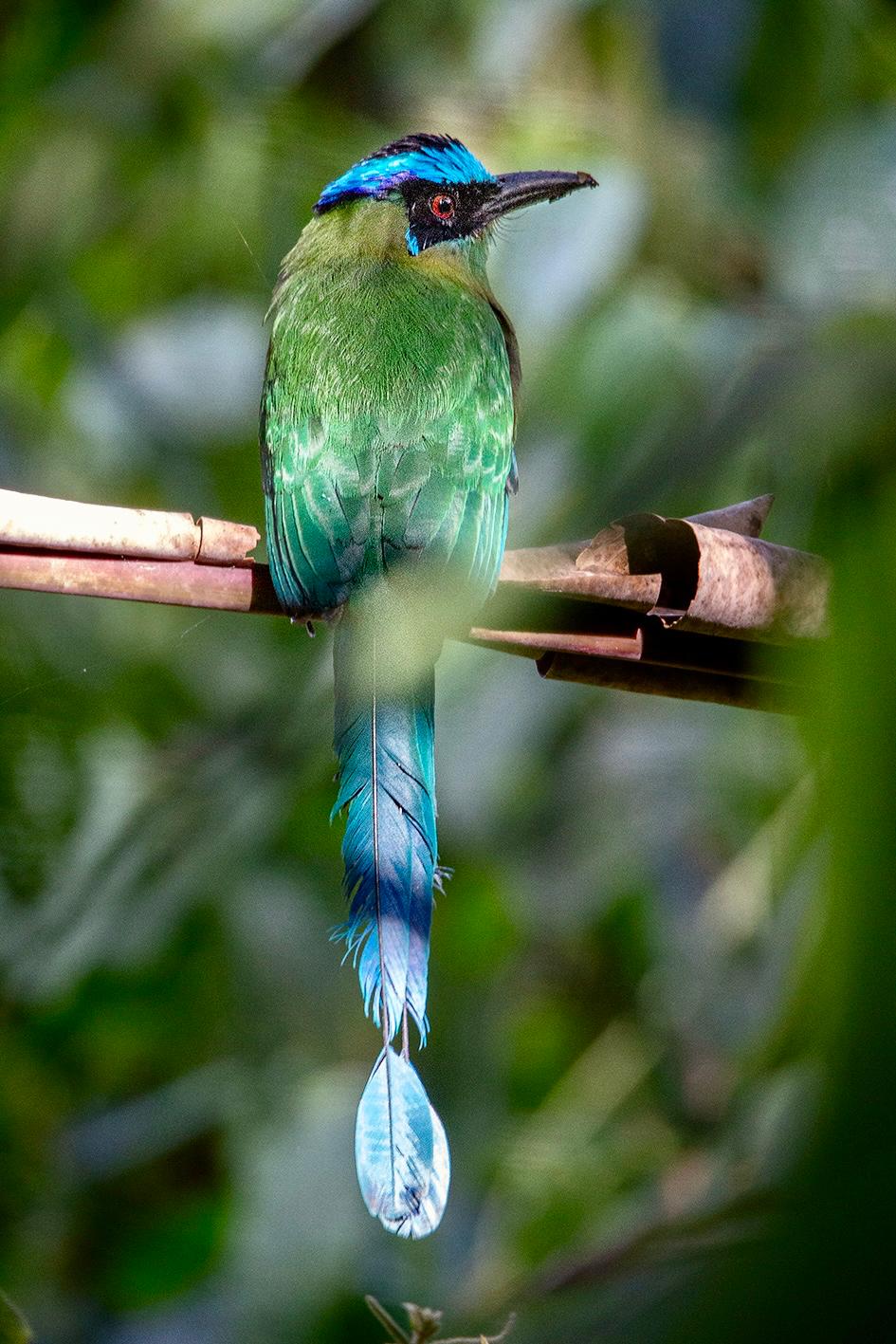
When the Barranquero Found Us
Share
I first saw the Barranquero through Felipe's eyes before I saw it through his lens. We'd been walking Johan's reserve for twenty minutes when Felipe stopped mid-sentence, his weathered hat tilting as he looked up. "There," he whispered, his gaze already set among the trees. "El Barranquero has arrived."

The bird perched on a tree limb, its electric blue crown catching the filtered afternoon light. Felipe handed me his camera without a word - a generous gesture that transformed me from observer to participant. In that moment, everything he'd taught us about photography clicked into place. This wasn't just about capturing a bird - it was about witnessing the intersection of one family's century-long dream and the ancient rhythms of a forest that refuses to surrender.
The weekend had started with Felipe's workshop at the Salento bird fest, where he'd challenged us to see beyond the obvious frame. "Every photograph carries the weight of the place where it was taken," he'd said, adjusting his blue shirt as we gathered under the canopy. "But you have to earn the right to tell that story." I didn't understand what he meant until I met Johan Carvajal and learned about his life's work with the Palma de Cera.

Johan walked us through his experimental plots with the quiet intensity of someone who thinks in centuries, not seasons. His hands moved constantly as he spoke - pointing to seedlings, measuring growth, explaining breakthrough techniques that were revolutionizing palm conservation. What should have been tiny saplings barely reaching our ankles stood chest-high, their fronds already spreading wide. "These are five years old," Johan said with understated pride, "but they look like thirteen-year-old palms." The difference was astounding. While traditional plantings struggled to establish themselves, Johan's accelerated growth methods were solving one of the biggest challenges in wax palm conservation.

The palms we'd admired in Cocora Valley, those towering giants that define Colombia's landscape, are mostly 150 years old or more. They need 85 years just to reach sexual maturity. Johan was not only planting trees his great-grandchildren might see reproduce - he was finding ways to give them a fighting chance against time itself.
"Most people see slow growth as a problem," Johan told us, standing beside his thriving young palms. "I see it as a puzzle to solve." The irony wasn't lost on me - here was a man fighting for trees that outlive governments, funding his breakthrough research from his own pocket while Colombia's wax palms face their greatest threats in centuries. Cattle grazing destroys young palms before they can establish roots. Climate change pushes them higher up mountains that are running out of elevation. Development pressure turns centuries-old groves into pasture overnight.
But Johan's family had chosen the long view. Their reserve protects not just palms, but the entire ecosystem that depends on them. Birds like the Barranquero - the Turquoise-browed Motmot - need old-growth forest to thrive. In local tradition, the Barranquero carries messages between worlds, a bridge between the seen and unseen. Watching it through Felipe's viewfinder, I understood why ancient cultures trusted this bird with their prayers.
The Barranquero held its pose for maybe two minutes - though it felt like twenty. Time stretched the way it does when you're holding borrowed equipment, trying to honor both the bird's presence and Felipe's trust. Its red eyes seemed to register our presence without concern, as if it understood that this place, this moment, this convergence of vision and conservation, was exactly where it belonged. When it finally lifted off, disappearing into the green maze of recovering forest, I realized Felipe was right. Some photographs do carry the weight of the places where they're taken. But the best ones also carry forward the dreams of the people fighting to protect those places.

That single image of the Barranquero now tells Johan's story better than any words I could write about palm conservation or breakthrough growing techniques. It speaks to something universal about the patience required to plant seeds you'll never see flower, to protect birds whose great-great-grandchildren will depend on choices we make today. In the end, that's what both photography and conservation really are - acts of faith in a future that belongs to all of us, accelerated by the quiet brilliance of people who refuse to accept that slow growth means no hope.

